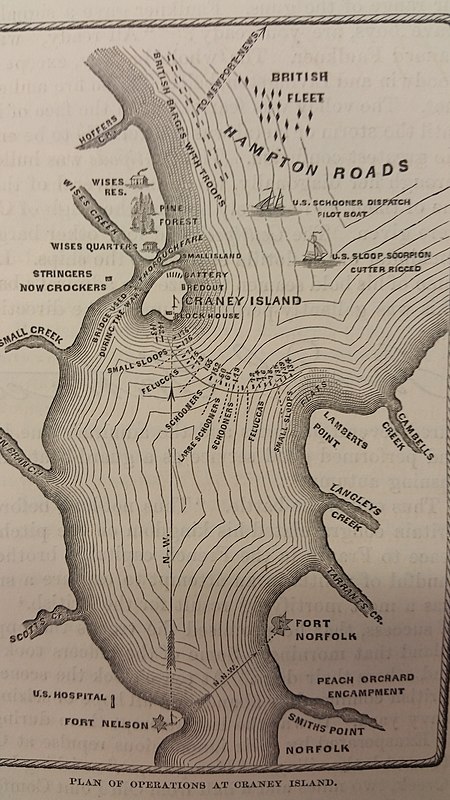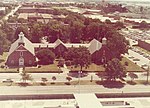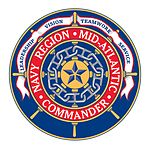Hampton Roads is the name of both a body of water in the United States that serves as a wide channel for the James, Nansemond, and Elizabeth rivers between Old Point Comfort and Sewell's Point where the Chesapeake Bay flows into the Atlantic Ocean, and the surrounding metropolitan region located in the southeastern Virginia and northeastern North Carolina portions of the Tidewater Region.
Comprising the Virginia Beach–Norfolk–Newport News, VA–NC, metropolitan area and an extended combined statistical area that includes the Elizabeth City, North Carolina, micropolitan statistical area and Kill Devil Hills, North Carolina, micropolitan statistical area, Hampton Roads is known for its large military presence, ice-free harbor, shipyards, coal piers, and miles of waterfront property and beaches, all of which contribute to the diversity and stability of the region's economy.
The body of water known as Hampton Roads is one of the world's largest natural harbors (more accurately a roadstead or "roads"). It incorporates the mouths of the Elizabeth, Nansemond, and James rivers, together with several smaller rivers, and empties into the Chesapeake Bay near its mouth leading to the Atlantic Ocean.The land area includes a collection of cities, counties, and towns on the Virginia Peninsula and in South Hampton Roads. Some of the outlying areas further from the harbor may or may not be included as part of "Hampton Roads", depending upon the organization or usage. For example, as defined for federal economic purposes, the Hampton Roads metropolitan statistical area (MSA) includes two counties in northeastern North Carolina and two counties in Virginia's Middle Peninsula. The Virginia Beach–Norfolk–Newport News, VA–NC, MSA has an estimated 2022 population of 1,806,840, making it the 37th-largest metropolitan area in the United States. The Combined Statistical Area includes three additional counties in North Carolina, pushing the regional population to 1,898,944 residents, the 32nd-largest CSA in the country.The area is home to hundreds of historical sites and attractions. The harbor was the key to Hampton Roads' growth, both on land and in water-related activities and events. While the harbor and its tributaries were (and still are) important transportation conduits, at the same time they presented obstacles to land-based commerce and travel.
Creating and maintaining adequate infrastructure has long been a major challenge. The Hampton Roads Bridge–Tunnel (HRBT) and the Monitor–Merrimac Memorial Bridge–Tunnel (MMMBT) are major harbor crossings of the Hampton Roads Beltway interstate, which links the large population centers of Hampton Roads. In 2009, the Hampton Roads Transportation Authority (HRTA) was abolished by the Virginia General Assembly less than two years after its creation. In 2014, the Hampton Roads Transportation Accountability Commission was established to oversee the Hampton Roads Transportation Fund.











